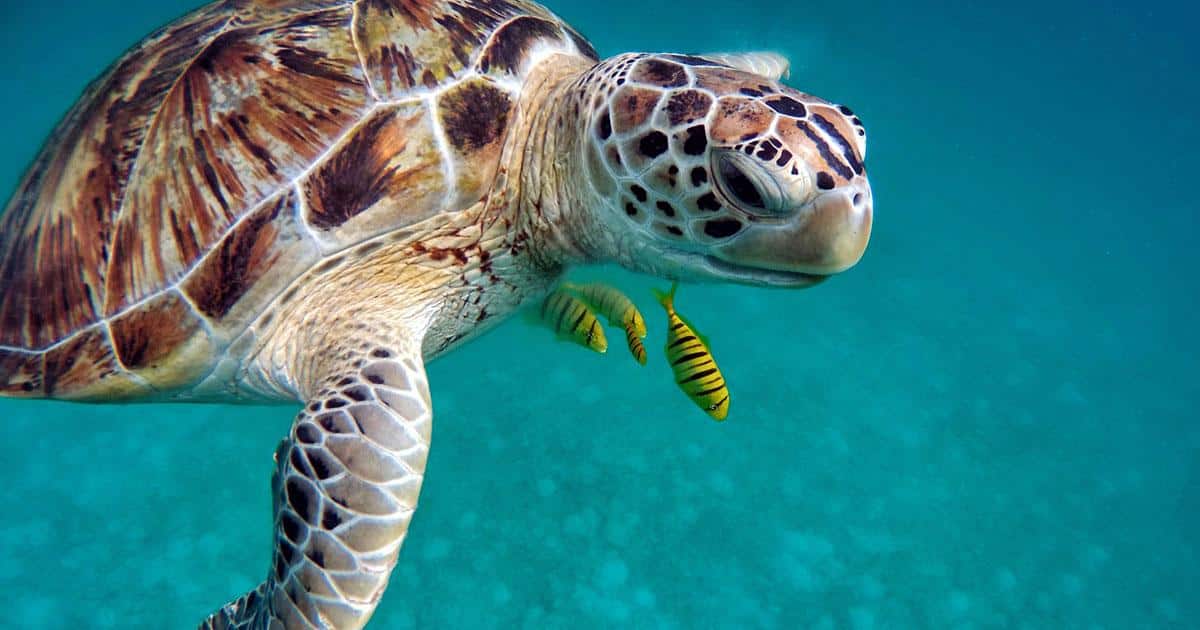Densities of endangered green turtles are increasing in Pacific coral reefs, according to the first comprehensive in-water survey of turtle populations in the Pacific. The study, by Sarah Becker of the Monterey Bay Aquarium in California and colleagues, published April 24 in the open-access journal PLOS ONE.
Coral-dwelling sea turtles have long been endangered due largely to human exploitation–hawksbills for tortoiseshell and green turtles for food–and destruction of coral reef habitat, but the institution of global protection efforts beginning in the 1970s aimed to reverse this decline. Land-based surveys of breeding and nesting sites have provided important evidence of population sizes, but are limited in scope and without confirmation from the ocean where the turtles spend the vast majority of their time.
To more fully understand the density of the populations of these two turtle species, as well as the environmental and anthropogenic factors that have driven them, the authors combined data from 13 years of in-water visual surveys of turtle abundance near 53 islands, atolls, and reefs throughout the U.S. Pacific. During a survey, a slow-moving boat tows a pair of divers at about 15 meters below the surface, where they record details of habitat and sea life as it comes into view. In all, the surveys covered more than 7,300 linear kilometers and observed more than 3,400 turtles of the two species.
Survey data showed that American Samoa had the highest density of hawksbills, while the Pacific Remote Islands Area, a mostly uninhabited region about a thousand miles southwest of Hawaii, had the most green turtles. Hawksbill numbers were far lower (< 10%) than green turtle counts, indicating that many conservation threats still exist for this species. Density of green turtles were driven primarily by ocean temperatures and productivity, but suggested effects from historical and present-day human impacts. Over the survey period, green turtle populations were either stable or increased. The lowest density but the highest annual population growth was found in the Hawaiian Islands, suggesting that protective regulations may be paying off in allowing green turtle populations to rebound.
Becker adds: “This study represents one of the largest sea turtle population surveys ever conducted, filling critical gaps on in-water abundance and drivers of population density. Across the tropical Pacific several locations held impressive densities of sea turtles and, in all, regions densities were driven by bottom-up forces like ocean temperatures and productivity and top-down forces such as human impacts.”
Story by PLoS
Journal Reference:
Becker SL, Brainard RE, Van Houtan KS (2019) Densities and drivers of sea turtle populations across Pacific coral reef ecosystems. PLoS ONE 14(4): e0214972. https://doi.org/10.1371/journal.pone.0214972
This work was supported by grants from the NOAA Office of Habitat Conservation and Coral Reef Conservation Program to RB. The funder had no role in study design, data collection and analysis, decision to publish, or preparation of the manuscript.
Competing Interests: The authors have declared that no competing interests exist.

